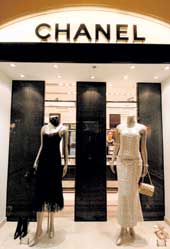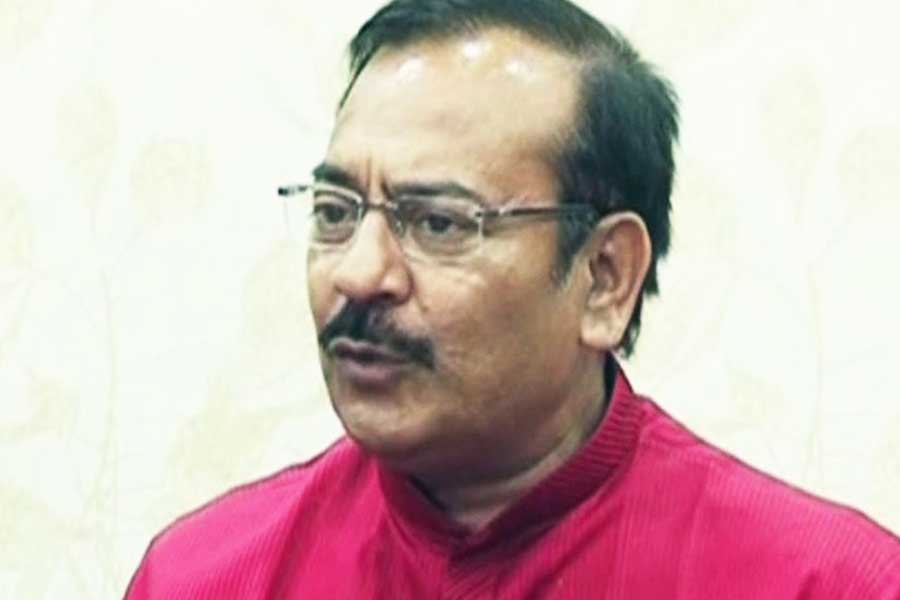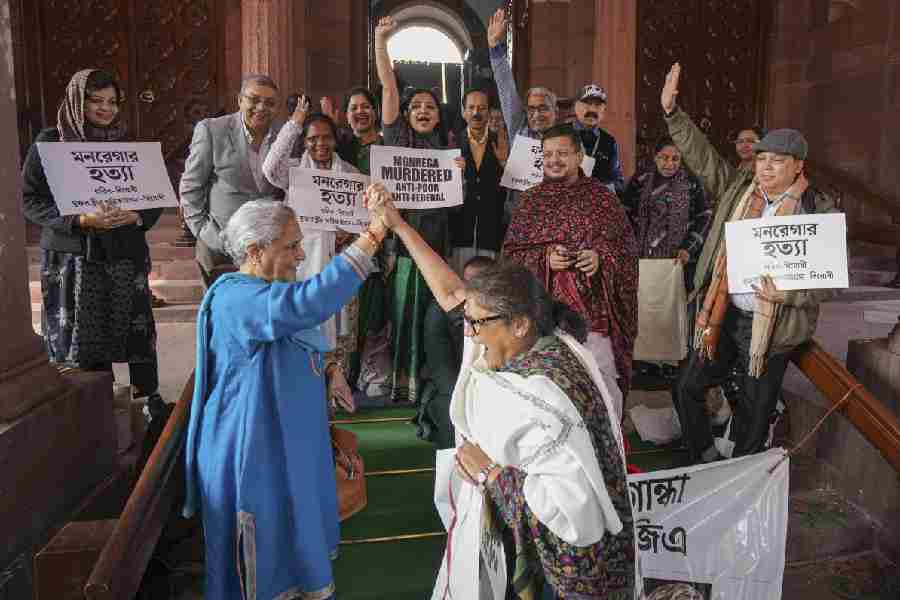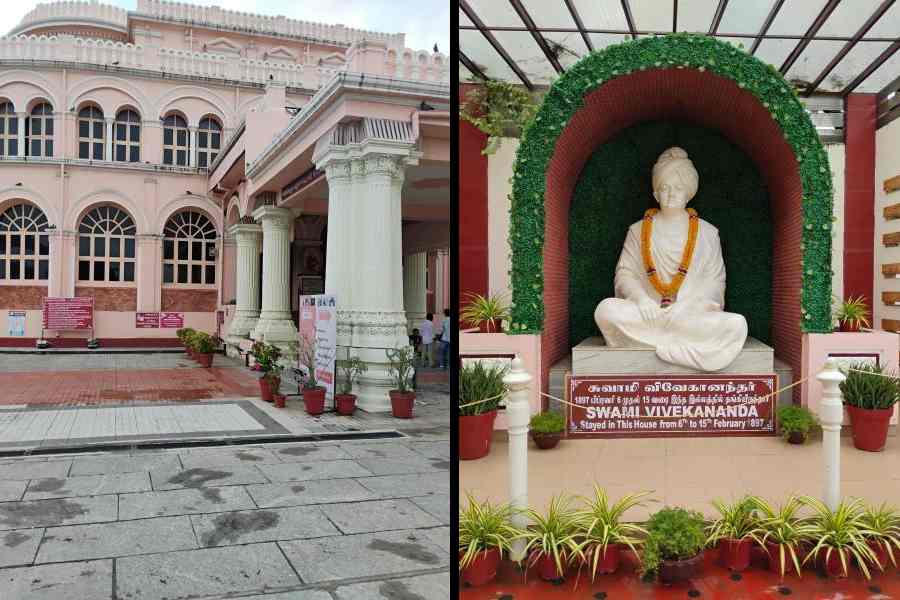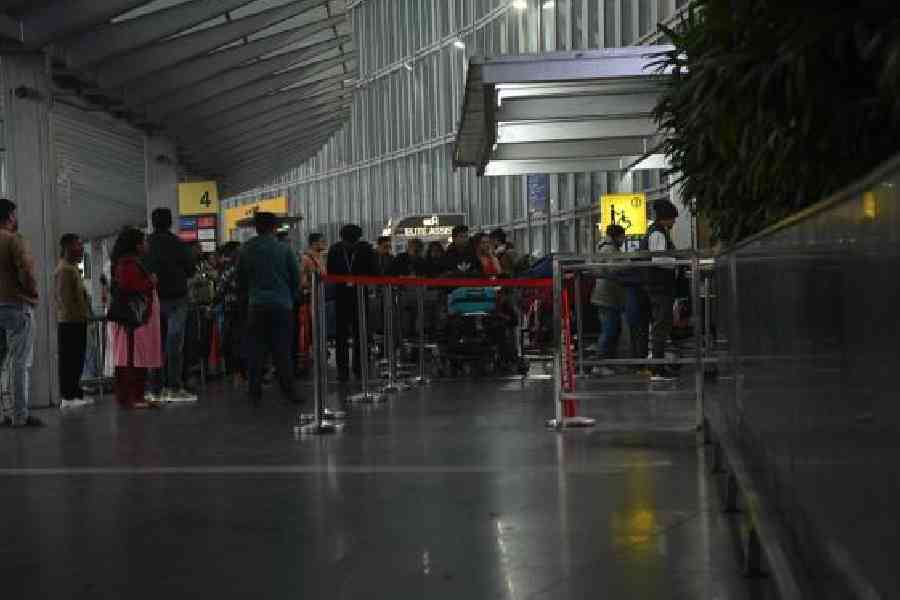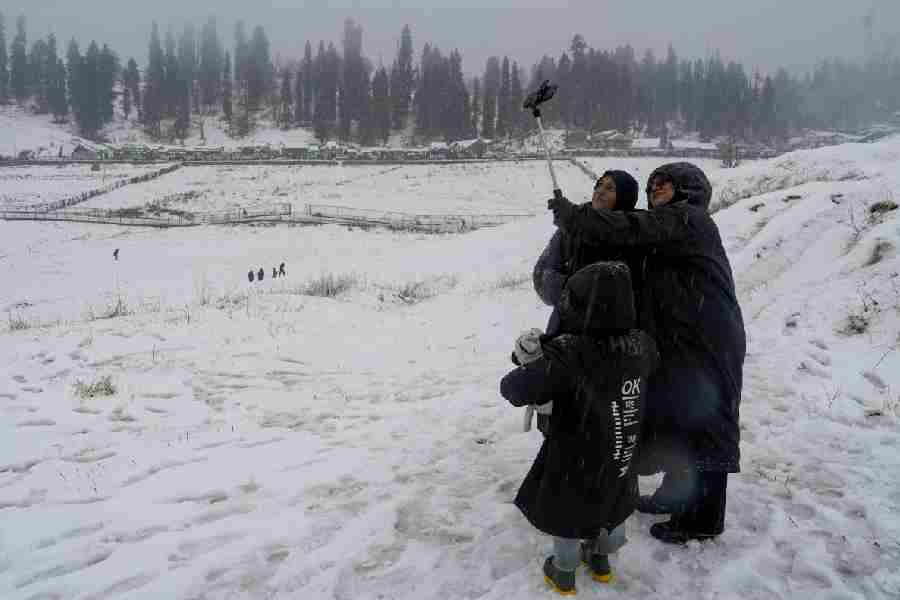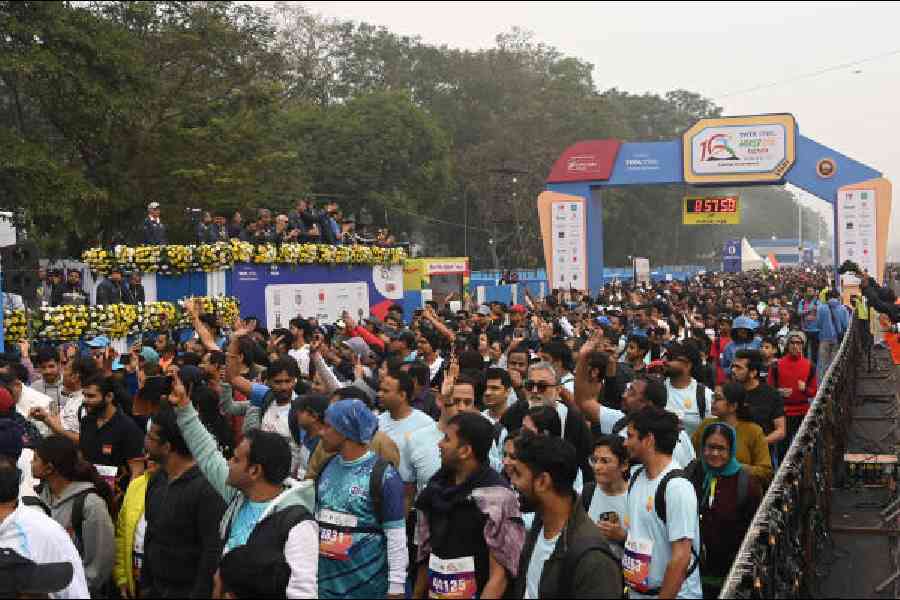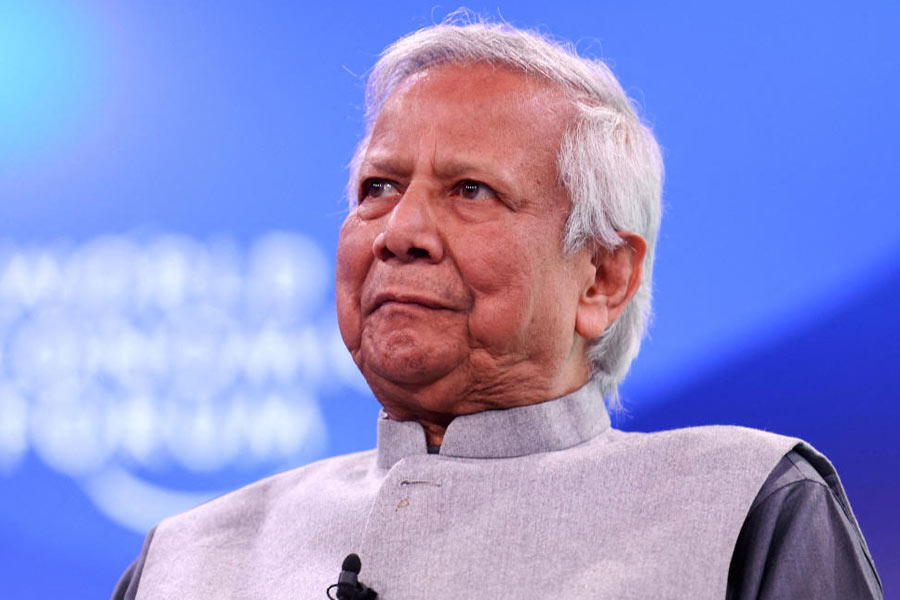 |
 |
| HEY BIG SPENDER: A Chanel showroom in Delhi caters to the super rich (top) and shoppers rack up volumes at a clothes store in Calcutta |
Delhi-based radio jockey Ginnie Mahajan catches up with her friends over a meal twice a week, each of them running up a bill of around Rs 1,000 every time. There’s another Rs 4,000-Rs 5,000 a month spent on clothes, shoes and accessories and impulse shopping at malls.
Rekha Sharma, a Mumbai-based copywriter, plans to spend at least Rs 10,000-15,000 a month until the end of the year doing up her new house. That’s apart from the Rs 10,000 she and her boyfriend set aside on eating out, entertainment and shopping for clothes and lifestyle items. And then there are the few thousand rupees she spends on books and music, things she “simply can’t have enough of”.
Mahajan and Sharma aren’t quite in the same league as Pritam Mukherjee Roy, fitness consultant at Calcutta’s Solace Spa. Roy is mostly togged out in branded foreign designer labels — Van Heusen, Prada, Tommy Hilfiger and Levi’s — and sprays Dolce&Gabbana, Calvin Klein and Davidoff perfumes on himself.
Nevertheless, every swipe of their credit cards not just affirms India’s unprecedented economic boom but also powers it. A have-money-will-spend attitude is generating a never-before demand for branded goods, personal vehicles, lifestyle products, entertainment and travel options and comfortable lifestyles, spurring companies and the economy to expand.
Latest government data show the Indian economy expanded at 9 per cent for two successive years, with last year’s 9.4 per cent growth the highest in 18 years. “The growth is undoubtedly driven by consumer demand,” affirms Siddharth Roy, economic advisor, Tata Services.
That’s why many cannot understand Prime Minister Manmohan Singh’s public lament about conspicuous spending at a Confederation of Indian Industry (CII) function recently. “Consumption by the rich creates jobs for the poor. That money circulates in the economy,” notes D.H. Pai Panandikar, president RPG Foundation, though he concedes that investing the money in a business could provide employment to a larger number of people.
But it’s not as if only the super-rich are spending, though, rues Rajiv Shukla of the National Council of Applied Economic Research (NCAER), media coverage makes it seem so. Sure, global luxury brands are hotfooting it to India. Christian Dior, Hugo Boss, Louis Vuitton, Moet Hennessey, Esprit, Guess and Tag Heuer are already here, Diesel has a foot in the door and a host of other big names are waiting in the wings.
The market for these, however, is confined to 1.6 million households (around 7 million individuals) earning over Rs 45 lakh a year and spending about Rs 4 lakh on luxury and very premium goods and services, according to India Luxury Trends 2006 brought out by The Knowledge Company from the KSA Technopak stable.
What’s more, 60 per cent of the luxury consumers are concentrated in the north and west regions. “The luxury segment is not the India story,” asserts Amit Adarkar, CEO, Market Probe, India and Dubai.
Panandikar stresses that the spending habits of the rich alone can’t bring a 9 per cent growth. “That is happening because of the 300 million middle class,” he notes. Saloni Nangia of Technopak points out that the one million club of the rich is anyway not buying in India.
Demand for Indian goods is certainly not coming from Calcutta entrepreneur Mukesh Thanky who buys Armani and other designer weeds from Marks and Spencer, drinks the finest of red and white wines and is thinking of buying a BMW. Driven by rising incomes and relatively easy availability of personal loans, it comes from Delhi IT professional Vandana Arora, who calls herself a compulsive shopper and spends Rs 15,000 a month on clothes, personal grooming items and eating out.
Demand is also coming from office assistant Vishnu Singh, who recently bought his 10th cell phone in eight years. “I change handsets to keep up with the latest trends,” he grins, not knowing that he probably had a small part to play in the telecom equipment sector growing 43 per cent in 2006-07. Bangalore driver Muthu, too, bought a mobile phone with his first salary of Rs 5,000. He catches every Kannada movie, first day, first show, and treats himself to a non-vegetarian meal at a dhaba once a week.
No wonder the retail and hotels and restaurants sectors each grew at upwards of 8 per cent a year for the past three years. Topping the growth charts has been the communications sector, expanding at over 20 per cent a year since 2000.
No longer is the demand confined to the metros or to certain classes, insists Adarkar. Spending on the luxury and premium segments is, he admits, skewed towards the rich but notes that the boundaries between premium and non-premium is increasingly getting blurred. Across products, companies are now catering to a new “masstige” (mass and prestige) segment — Accent, Esteem and Indigo in cars, Titan in watches, Park Avenue and Vivaldi in shirts. An NCAER survey on the Great Indian Middle Class showed that the bulk of the spending action is in small towns.
Demand, notes Shukla, who anchors the survey, will always be relative to people’s buying power. So while practically all consuming households buy toiletries, watches, radios and bicycles, only half of them buy black and white televisions and sewing machines. The penetration levels of colour televisions, refrigerators, washing machines and two wheelers is only 40 per cent and that of cars and air conditioners even less at 10 per cent.
Spending isn’t just an India story. It is also a Bharat story. The rural market, says Pradeep Kashyap, CEO of marketing consultancy firm MART, is growing faster than the urban market. The NCAER survey shows that the demand for two-wheelers, refrigerators, colour televisions and washing machines in rural areas is quite high. There’s also a huge demand for second-hand cell phone handsets in rural areas. That’s probably why firms such as Godrej, ITC and Shriram Fertilisers have got into rural retailing in a big way, with stores that started selling agricultural inputs, including seeds, fertilisers and equipment, now dealing in consumer goods and textiles.
However, spending patterns are more uneven in rural areas, with small and marginal farmers and agricultural labourers not quite in the picture. Half of the rural income is with 75 per cent of the population dependent on agriculture, Kashyap notes, while the other half is with 25 per cent of the population engaged in non-farm occupations. The spending skew is tilted towards this group and that of the big farmers who constitute only 2 per cent of the agriculturists, admits Kashyap.
Lack of basic infrastructure like roads and electricity are shackling spending by the rural rich. “Sales of electronic goods will skyrocket once there is assured and good quality power in rural areas,” says Kashyap. But it’s not as if they aren’t contributing to the demand-led growth. They’re spending on building and renovating houses, irrigation and generators. Companies have also not woken up to the full potential, partly out of problems in reaching out to them. One-fourth of the middle class is in rural areas, notes Shukla, but they are scattered over six lakh villages.
What worries Kashyap (and was probably on the Prime Minister’s mind) is the reckless spending on what he calls non-essentials. “Spending is disproportionate to savings. We are borrowing from tomorrow to spend today,” he says. Economists, though, aren’t worrying too much. Household savings accounted for 22 per cent of India’s wealth in 2005-06 and that’s among the highest in the world. And with industry not slowing down its investment plans, the economy, they say, is on a pretty firm footing.
That should have the Mahajans, Aroras, Singhs and Muthus breathe a mite easy as they head for the markets once again.

